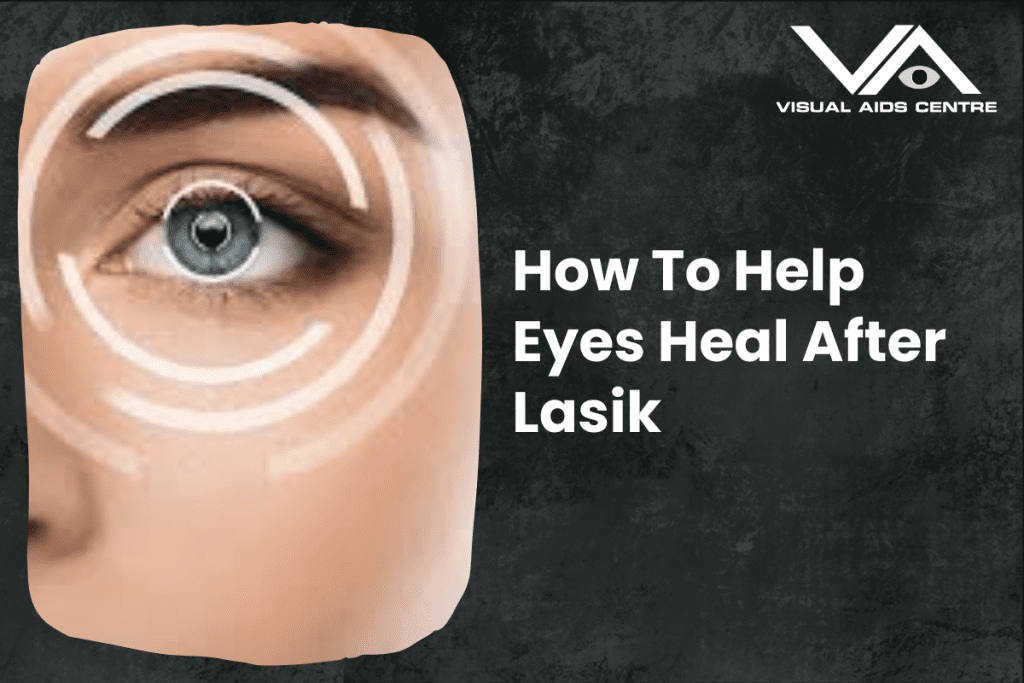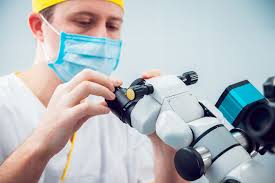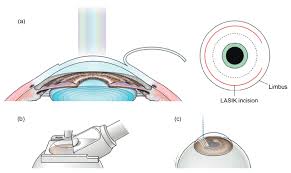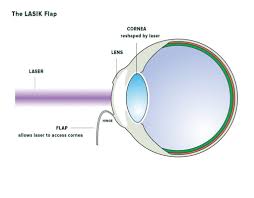Table of Contents
ToggleProper care and attention after LASIK surgery are key to helping your eyes heal quickly and restoring clear vision.
While the procedure itself is quick and safe, the days and weeks that follow require thoughtful aftercare to ensure optimal results and minimise complications.
Whether you’ve just had LASIK or are considering the procedure, this blog will guide you through the essential steps to aid your recovery and keep your eyes healthy post-surgery.

Follow Your Doctor’s Post-Surgery Instructions
Your LASIK surgeon will provide detailed care instructions tailored to your specific case. Following these directions is non-negotiable and paramount to recovery.
- Use prescribed eye drops as directed. These are usually antibiotic drops to prevent infection and lubricating drops to combat dryness.
- Avoid rubbing your eyes at all costs, even if they feel itchy or irritated.
- Stick to recommended follow-up appointments. These visits help track your recovery and address any potential issues early.
Tip: Keep your eye drops within easy reach, and set reminders on your phone to apply them on time. Consistency is crucial in promoting healing.
Protect Your Eyes from the Elements
Your eyes are especially sensitive post-LASIK, so shielding them from environmental irritants is critical.
- Wear protective eyewear whenever you’re outdoors. Sunglasses that block 100% of UV rays are a must, even on cloudy days.
- Stay indoors during dusty or windy conditions to prevent debris from entering your eyes.
- Avoid exposure to smoke or strong fumes, such as those from cleaning chemicals or hair products, which can irritate healing eyes.
Pro Tip: Wrap-around sunglasses offer added protection against side exposure from wind and debris.
Rest Your Eyes and Limit Screen Time
The first 24-48 hours after surgery are crucial for letting your eyes rest. Avoid activities that strain your vision.
- Refrain from using smartphones, computers, and TVs during the initial recovery phase. Extended screen time can worsen dryness and fatigue.
- Prioritise sleep since it promotes natural healing. Ensure you wear the protective shields provided by your doctor while sleeping to avoid accidental rubbing or pressure on your eyes.
After the first few days, gradually ease back into screen-related tasks. Remember to take regular breaks following the 20-20-20 rule – every 20 minutes, look at an object 20 feet away for 20 seconds.
Stay Hydrated and Maintain a Healthy Diet
Hydration plays a key role in recovery, as it helps keep your eyes moisturised. Make it a goal to drink at least eight glasses of water daily.
Your diet also has a direct impact on eye health. Include foods rich in eye-nourishing nutrients, such as:
- Vitamin A: Found in carrots, sweet potatoes, and kale, it supports overall eye health.
- Omega-3 fatty acids: Fatty fish like salmon and flaxseeds can help reduce dryness.
- Vitamin C: Citrus fruits and bell peppers contribute to tissue repair.
Consider adding a high-quality eye-specific supplement if approved by your doctor.
Avoid Rubbing or Touching Your Eyes
After LASIK, it’s normal for your eyes to feel itchy or irritated, but resist the urge to rub them. Doing so can disrupt the healing corneal flap and increase the risk of complications.
If itching becomes bothersome, use the lubricating drops prescribed by your surgeon to soothe discomfort.
Pro Tip: If you’re someone who touches your face unconsciously, consider wearing protective shields even during the day for the first few days post-surgery.
Steer Clear of Strenuous Activities
Physical exertion can delay healing or lead to complications.
- Avoid high-intensity exercises, heavy lifting, or sports for at least a week. You don’t want to increase pressure around the eyes or expose them to sweat and debris.
- Swimming in pools, hot tubs, or the ocean should also be avoided for up to four weeks as contaminants in the water can lead to infections.
Discuss with your doctor when it’s safe to resume specific activities such as yoga, running, or weightlifting.
Monitor for Any Unusual Symptoms
While mild discomfort, redness, or dryness is normal after LASIK, certain symptoms require immediate attention. Contact your surgeon if you experience the following:
- Persistent pain that doesn’t subside with medication.
- A significant increase in redness or swelling.
- Sudden vision changes, such as blurriness or black spots.
- Yellowish discharge, which could indicate an infection.
Tip: Keep a log of your recovery experience to track any patterns or issues that need to be discussed during follow-ups.
Prioritise Good Hygiene
Keeping your eyes and surrounding area clean prevents infections from developing.
- Don’t wear makeup during the recovery period, as it can introduce bacteria. Avoid mascara, eyeliner, and powder-based products for at least a week.
- Ensure your hands are thoroughly washed before applying eye drops or touching your face.
- Use only clean towels and pillowcases to avoid bacterial exposure.
Pro Tip: Consider setting up a recovery corner with all your essentials—clean tissues, eye drops, protective glasses—to promote hygienic habits.
Be Patient with Vision Fluctuations
It’s common for vision to fluctuate during the healing process. You might experience halos, glare, or sensitivity to light, especially during the first few weeks.
Keep in mind that your vision will stabilise over time. Follow-ups with your doctor will ensure everything is progressing as planned.
If your job requires driving or reading fine print, discuss timelines with your surgeon. Temporary adjustments like anti-glare glasses might help.
Stay Positive and Give Your Eyes the Time They Need
Healing after LASIK requires patience and care. While results are typically noticeable after just a few days, full recovery can take several weeks. Staying committed to these aftercare steps will pave the way for long-term success.
Final Thoughts
LASIK is a life-changing procedure, offering the freedom of clearer vision. However, the responsibility lies with you to ensure your eyes heal properly. By adhering to your doctor’s advice, protecting your eyes, and adopting healthy habits, you’ll be set up for a successful recovery.
Got questions or concerns about your recovery? Don’t hesitate to reach out to your eye care professional. Following these steps, you’ll soon enjoy the benefits of LASIK and your newfound sight with confidence.













